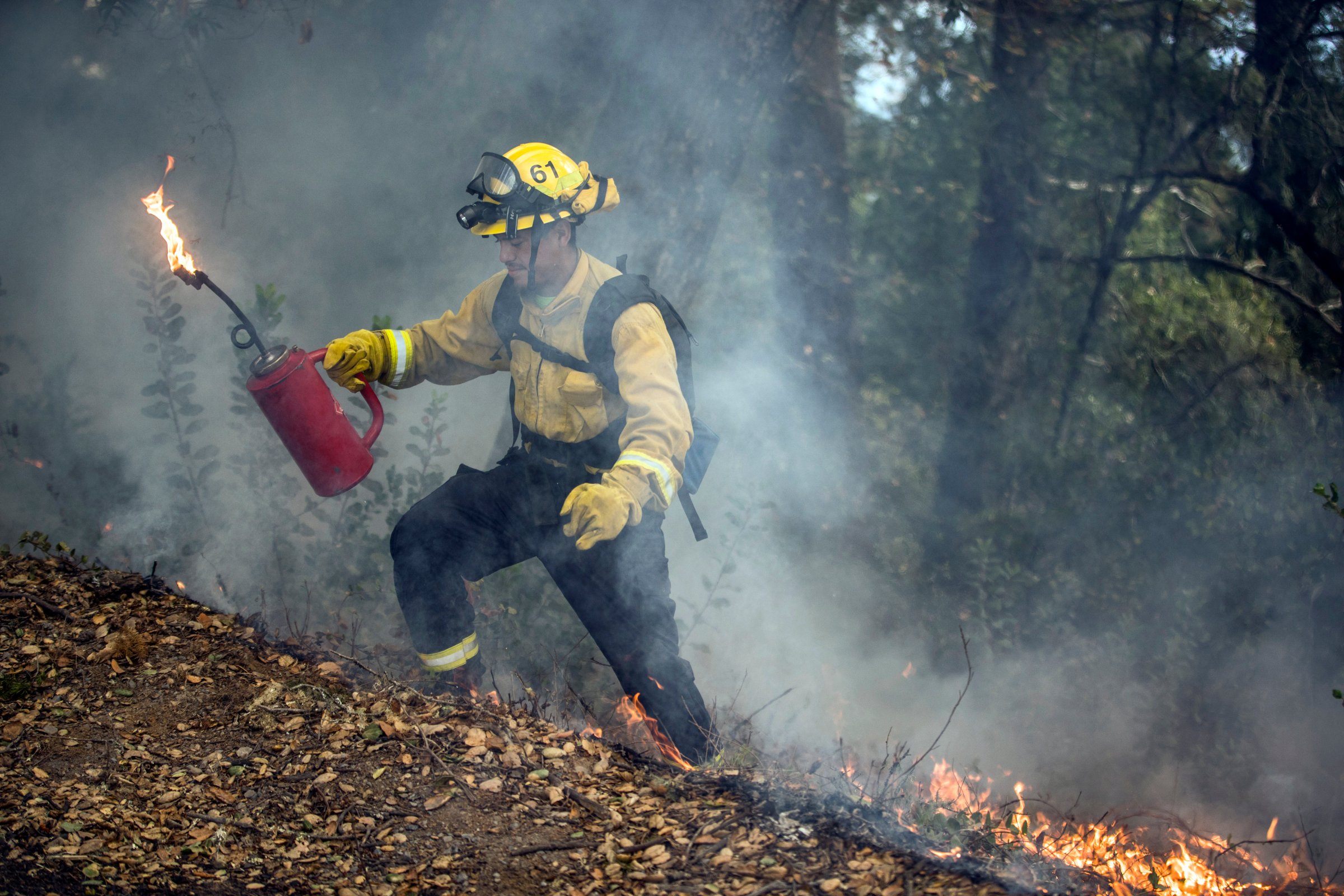
Last month in New Mexico, two separate wildfires in the same vicinity combined, resulting in a massive conflagration that is still ripping through the state. As of May 12, the Calf Canyon-Hermits Peak Fire had swept through nearly 260,000 acres. The Hermits Peak fire started in early April as a prescribed burn limited to 1,200 acres. But it got out of control due to strong winds, high temperatures, and dry weather, and ballooned to 7,500 acres by the time it joined the Calf Canyon wildfire (the source of which is still under investigation).
Prescribed fires are ignited intentionally to cull forest growth that could act as dangerous fuel for unplanned wildfires. When they go as planned—as the vast majority do—they don’t make news. But when they get out of control, they make headlines, which can erode public trust in the practice, even as wildfires have become increasingly destructive due to global climate change.
A 2006 report from the USDA Forest Service found that between 80% and 90% of Americans consider prescribed burning an appropriate wildfire management tool—but that doesn’t mean they are fully enthusiastic about it: only a third strongly approve its use. Public concerns over smoke and escaped burns translate into real-life policies. For 18 years, Washington state didn’t burn on state lands due to air quality concerns, but worsening wildfires pressed the state to reverse course this year. Additionally, prescribed fire programs have often suspended following an escape—particularly in cases where people lost their homes.
“People recognized the benefits… [but] when we have a prescribed burn that escapes and becomes a major wildfire, perception shifts to them being scary,” says Rebecca Miller, a postdoctoral scholar at the Huntington-USC Institute on California and the West who has researched public and policy perceptions about controlled burns. “It makes science-based policies to enact burns more challenging when there’s pushback after one or two incidents get out of hand.”
Prescribed fire escapes are, indeed, very uncommon. One 2006 study of prescribed fires conducted by the Forest Service found that less than 1% of prescribed fires under its jurisdiction escaped between 2003 and 2005. While that snapshot is limited (the agency performed a third of all prescribed fires in the U.S. during those years) other studies reinforce the relatively low probability of escapes. For instance, prescribed burn associations in five Great Plains states reported 16 escapes out of 1,094 burns conducted between 1995 and 2012—a rate of less than 2%.
The broad consensus among wildfire experts is that the benefits of prescribed fires—when done as controlled and safely as possible—are enormously beneficial while carrying relatively small risk. Studies of the practice in the Sierra Nevada and in Lassen Volcanic National Park indicate that when prescribed burns go as intended, they can reduce wildfire intensity by more than 70%.
“Fire efficiently burns dead wood, pine litter, and grasses so when summer or fall fire comes through, there’s less to burn. The science is absolutely unequivocal on it,” says Susan J. Prichard, research scientist at the University of Washington School of Environmental and Forest Sciences.
READ MORE: After Visiting Both Ends of the Earth, I Realized How Much Trouble We’re In
Meanwhile, climate change is increasing the likelihood of intense wildfires. A study released last month predicted that if temperatures rise to 2°C above pre-industrial levels, there will be an average of 340 extreme wildfires annually in the fire-prone western U.S., compared with an average of 130 such events that happened between 1986 and 2015. The study’s researchers, from Western Colorado University in Gunnison, defined extreme wildfires as those that spread about 2,700 acres a day.
As wildfires become a more serious threat, prescribed burning is becoming a more utilized mitigation tool; there were more than 800,000 prescribed fires between 2017 and 2019, up from 44,000 between 2007 and 2009. As the chart below shows, that has resulted in millions more treated acres.
Despite the uptick, experts say more prescribed burning is needed, as Native American tribes have long known. The problem, they explain, is that the Forest Service’s zero-fire rules—also known as 10 a.m. policies, as all fires had to be extinguished by that hour the day after they were reported—between 1935 and 1978 resulted in over-vegetation that we are now scrambling to cut back, at the same time that summers are getting longer, hotter, and dryer due to climate change.
Federal agencies that are responsible for managing U.S. land manually cut back or burned some 3 million acres in the 2018 fiscal year—a fraction of the estimated 100 million acres within their jurisdictions that are at high risk from wildfire, according to a report from the Government Accountability Office.
“To deal with this scale, we need every tool in the toolbox. We need managed wildfires from lightning strikes, manual cutting, prescribed burns, livestock grazing. We need all of it,” says Miller. “We’re not going to mechanically thin our way out of this problem.”
A version of this story first appeared in the Climate is Everything newsletter. To sign up, click here.
More Must-Reads from TIME
- Cybersecurity Experts Are Sounding the Alarm on DOGE
- Meet the 2025 Women of the Year
- The Harsh Truth About Disability Inclusion
- Why Do More Young Adults Have Cancer?
- Colman Domingo Leads With Radical Love
- How to Get Better at Doing Things Alone
- Michelle Zauner Stares Down the Darkness
Contact us at letters@time.com



